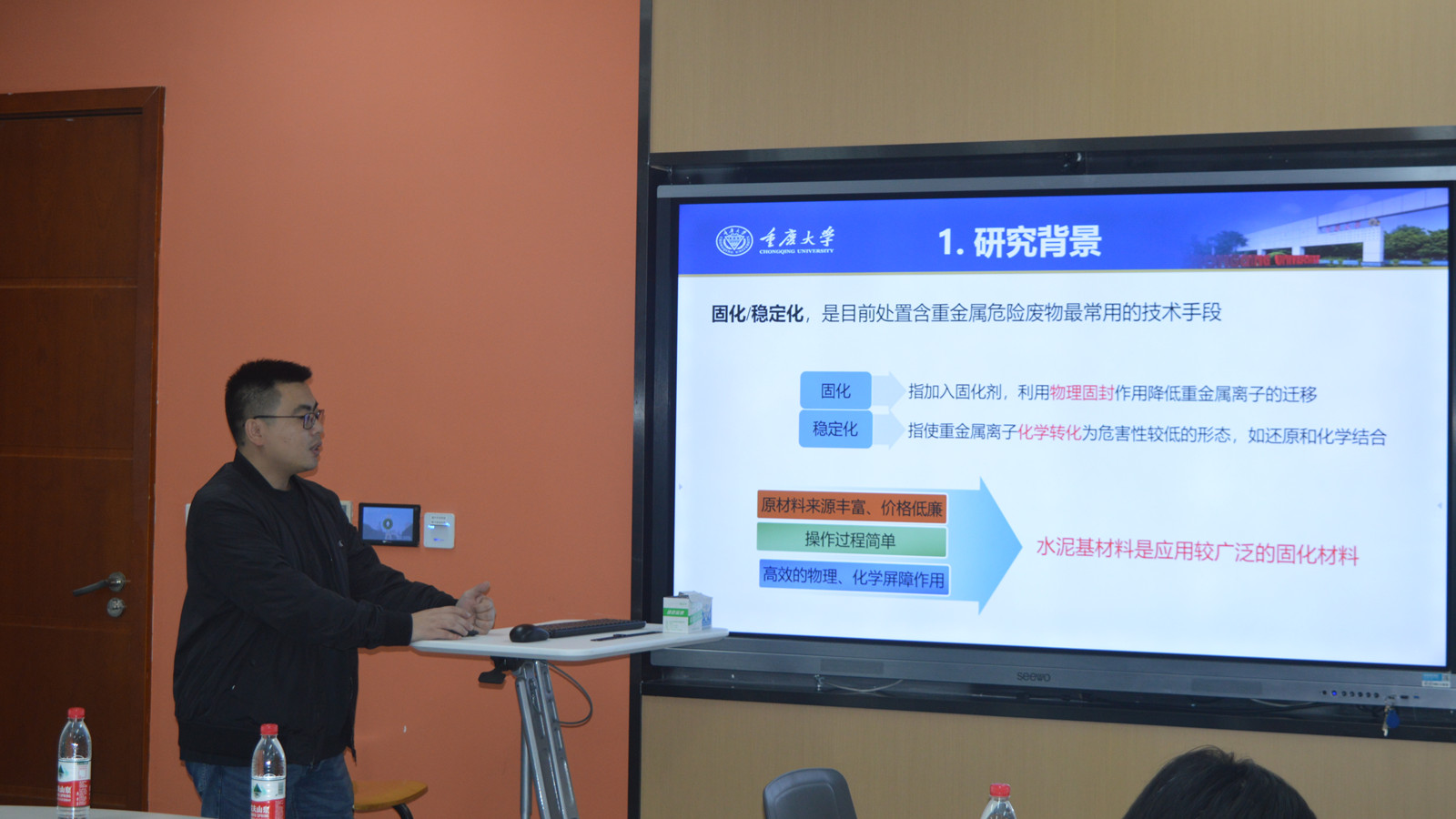In order to carry forward the academic spirit, activate academic thoughts, and provide a good academic environment and research atmosphere for the growth of young teachers and doctors, the 11th Youth Academic Salon was successfully held from 12:00 to 15:00 on November 4, 2021 in Room 202, 8th Teaching Building of Chongqing University District A. The guests invited in this salon include Hongshen Young Scholar Yangfan Lu, Associate Professor Ziyong Hou, and Postdoctoral Mingtao Zhang to give academic lectures.
First of all, Yangfan Lu shared "Material Science and Catalytic Application of Electron Salt". He explained the special material-electron salt in detail at first. Electron salt uses some electrons in itself as anions.

He mentioned that the electron salt as a catalyst helps to promote the activation of ammonia molecules and it is an ideal catalyst for the synthesis of ammonia gas. However, inorganic electronic salts are often extremely unstable, sensitive to water and air at room temperature, and lack chemical stability. In addition, there are few types of them (only three inorganic electronic salt materials have been synthesized), and their catalytic applications are also relatively few. Therefore, it is of great significance to explore new electronic salts.

Then Mr. Lu introduced two new electronic salts, among which Y5Si3 is a stable electronic salt in air and water, and the synthesis of ammonia was realized under low temperature and low pressure. In the Suzuki coupling reaction, its traditional homogeneous catalyst is difficult to recycle and reuse, and many of the developed ligands are expensive and toxic. The electron salt can be used as a heterogeneous catalyst for this reaction, but the heterogeneous catalyst has the defects of low efficiency and insufficient catalytic life. By using Zr similar to Y, C similar to Si, and a series of experimental methods, the ZrPd3-ZrC catalyst of high-quality was synthesized finally. The ZrPd3-ZrC catalyst has a catalytic performance more than 10 times that of the traditional catalyst, and improves the catalyst life and the utilization rate of Pd.

Then Ziyong Hou shared with us some researches on the design and characterization of high-performance structural metal materials. He first introduced some characterization methods in materials science research for us, especially the use of multi-scale material characterization techniques including major devices such as synchrotron radiation diffraction, which broadened the horizons of the students present. Using the existing characterization techniques, combined with thermodynamics and kinetic simulation methods, relevant research models can be established, and the models can be used to make predictions for material research, so as to design metal materials with excellent properties.
Finally, Mr. Hou explained to us some related researches using the above methods. For example, martensitic steel is characterized by high strength and poor toughness. Generally, it can improve its toughness after tempering, but at the same time, it is accompanied by coarsening of the structure. The volume fraction of the precipitates in the martensitic steel, the distribution of the precipitates, and the size will affect the performance of the steel. Through the material characterization method, combined with the simulation method to predict the performance of the steel, a range of steel with high strength and excellent toughness have been developed. In addition, the research on the decomposition of the duplex stainless-steel strip and the design of the new cobalt-free cemented carbide connection phase were also discussed.

Mingtao Zhang explained the solidification/stabilization of hexavalent chromium by alkali slag cementitious materials from four aspects. Mr. Zhang pointed out that chromium waste is harmful to the human body, and solidification/stabilization is a general way to deal with such hazardous heavy metal wastes. In view of the low solidification efficiency of Portland cement for hexavalent chromium, it was proposed to use sodium chromate as an activator of alkali slag cement to solidify the chromium.
Mingtao Zhang first verified the possibility of using it as an activator. The compressive strength, heat of hydration, XRD, TG, SEM, pH value and other results of different sodium chromate dosages showed that chromate has obvious excitation effect on slag. Its main hydration products are C-S-H gel and U phase. Therefore, the solidification effect on chromium ions was further verified, and the leaching concentration of chromium ions was checked. It was found that alkali slag cement had better solidification effect than Portland cement. After adjusting the alkali equivalent, it was found that increasing the base equivalent weight in the range of 3%-6% can improve the curing effect. Then, Mr. Zhang conducted research on its curing mechanism, and the results showed that chromium is mainly bound in the flaky U phase, and the binding effect of C(A)-S-H gel is small.
During the academic conference, the lecturers interacted with the on-site teachers and students many times. Teachers from different fields expressed different opinions and viewpoints on the same issue. The atmosphere of the scene was extremely active, and the report ended with warm applause.
The purpose of this Youth Academic Salon is to create a good atmosphere for academic exchanges, so that young teachers and students have a deeper understanding of academic research. At the same time, it provides a platform for academic exchanges and discussions for young teachers and graduate students, and promotes the development of the discipline construction of the College of Materials Science and Engineering. After that, the college will continue to carry out similar academic salon activities, so that teachers and students can learn new knowledge in a relaxed and pleasant atmosphere. And hope that everyone will actively participate in it!